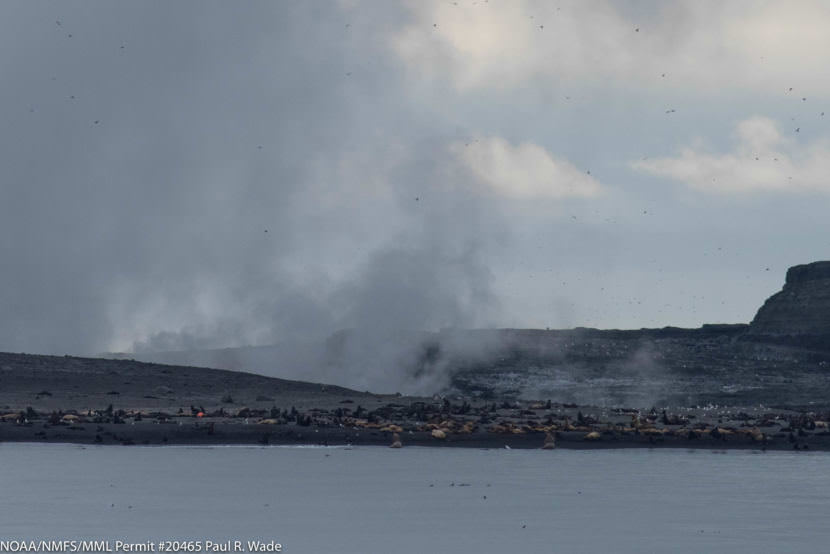
Before Bogoslof volcano started erupting, it was a haven for endangered Steller sea lions, fur seals, and sea birds. But scientists did not know when and if animals would return to the eastern Aleutian Island.
In the last year, Bogoslof volcano has erupted more than 50 times and is giving no indication of slowing down. This means even though scientists like Tom Gelatt would like to set foot on land, they can’t.
But with powerful camera lenses, they can check for wildlife on the island even from miles away.
“It was interesting because it was still steaming quite a bit of course,” Gelatt said. “The whole island was still covered in ash, but there were sea lions and fur seals all along the shoreline. A lot of animals. A lot of birds.”
The National Oceanic and Atmospheric Administration biologist was expecting to see animals on Bogoslof.
“Those animals have evolved with volcanoes for a long time,” he said. “It’s only speculative, but you can imagine when [Bogoslof] starts to rumble and go those animals that can move get in the water.”
When he passed by it was the day after an eruption and there’s been more since then. At this point, it’s too soon to tell what effects the eruptions will have on animals.
But researchers can tell the island has grown in size. If it stays large, Gelatt says that could mean more space for Steller sea lions, fur seals and seabirds to call home.
